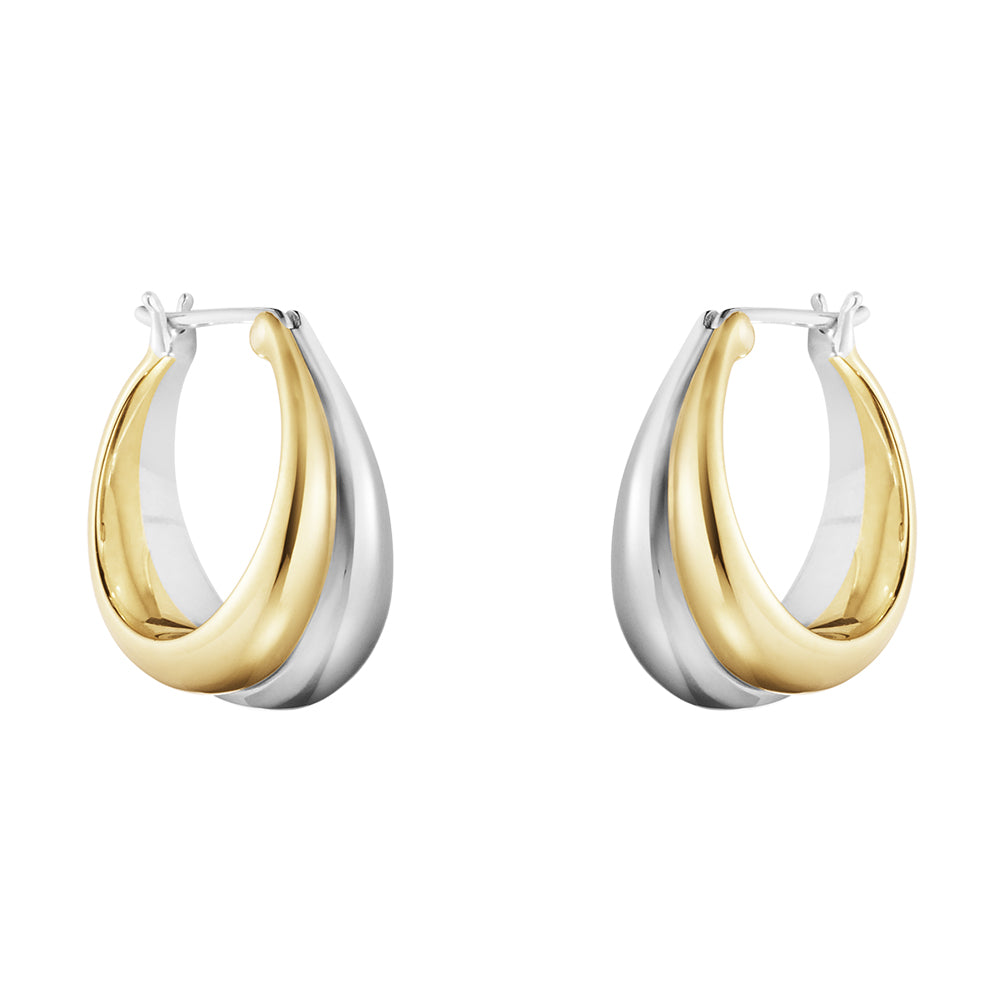
How To Take Off Earrings - For Chic Ladies
Introduction
Removing your favorite earrings gracefully should not be a painful or anxious experience. Whether your lobes are sensitive, the backing seems stuck, or you are wearing heavy statement pieces, this guide empowers every stylish woman to unhook her earrings with ease, confidence, and flair. The art of earring removal is often overlooked, yet it plays a crucial role in maintaining your style, protecting your piercings, and preserving your beloved jewelry. Let us embark on this elegant journey together, where even the smallest details of personal care become an expression of sophistication.
Why It Matters
Protecting Your Piercings
Many chic ladies make the mistake of removing earrings incorrectly. This can result in irritation, tearing, or even infection. According to dermatologists, a significant percentage of people with pierced ears experience complications from poor earring hygiene or careless removal. The earlobe, though seemingly resilient, is actually quite sensitive to improper handling. yanking on earrings, especially when the skin is dry or the piercing is new, can cause micro-tears that become entry points for bacteria. Furthermore, frequent rough removal can lead to stretched earlobes, a common concern among fashion enthusiasts who love statement pieces.
Maintaining Style Confidence
Earrings are powerful expressions of personality. Feeling confident about how to remove them means you are protecting both your skin and your style. Chic women know that elegance extends to the small moments—whether you're swiftly changing accessories between meetings or carefully undressing after a gala. When you master the art of earring removal, you carry yourself with an air of assuredness that enhances your overall presence. It's the little rituals of self-care that build genuine confidence, allowing your fashion choices to shine without underlying anxiety.
Preserving Jewelry Quality
Proper removal ensures that delicate designs remain intact. Many statement earrings use intricate fastenings that can loosen or break with rough handling. A beloved family heirloom or an investment piece from a designer collection deserves the respect of careful treatment. With smart habits, your favorite pieces stay beautiful for years, maintaining their resale value and sentimental worth. Consider the爪 setting on a diamond stud—improper removal can misalign the prongs, potentially damaging the gemstone. Similarly, the delicate chains on chandelier earrings can tangle or break if not handled properly during removal.
Common Pain Points and Solutions
Stuck Earring Backs
The frustration: You've worn your favorite studs all day, but now the backs refuse to budge. Panic sets in as you tug gently, hoping not to damage your lobes or the earrings themselves.
The solution: Apply a drop of mineral oil behind the earlobe. The oil acts as a gentle lubricant, penetrating between the metal backing and your skin. Wait a few minutes to allow the oil to work its magic. Then, with clean fingers, gently twist the backing while pulling it off in a straight motion. Avoid wiggling side-to-side, which can irritate the piercing hole. For those with sensitive skin, olive oil or a specialized piercing spray can serve as alternatives, though they may require slightly longer waiting periods.
Heavy Earrings that Pull
The discomfort: After hours of wearing those dramatic crystal drops, your earlobes feel elongated and tender. The thought of removing them seems daunting, as if the weight might cause permanent stretching.
The technique: Support the front of the earring with one hand, cradling the main body to distribute its weight. With your other hand, carefully remove the post or clasp from behind. This method prevents the earring from swinging freely, which would apply uneven pressure to your lobe. Consider using a small cushion or the palm of your hand as a landing spot for the earring as you remove it, ensuring a controlled process from start to finish.
Snagging on Cartilage
The challenge: Helix or daith piercings often feature delicate hoops or studs that seem to grip the skin during removal. Forcing the issue can lead to painful snags and potential injury to the cartilage, which heals more slowly than earlobe tissue.
The approach: Use a tissue for grip or a small rubber tool designed for piercing care. Slide the earring slowly upward instead of twisting, which reduces pressure on the cartilage. If the earring has a hinged design, ensure the hinge is properly aligned before applying any pressure. Taking your time is essential here—cartilage piercings require gentle handling to maintain their integrity and appearance.
Sleeping with Earrings
The dilemma: You want to keep your earrings in overnight for comfort or style reasons, but worry about damaging them or irritating your skin during sleep.
The solution: Choose flat back sleeper earrings that lie flush against the ear and reduce pressure while you rest. RelaxFeel offers several minimalist options ideal for night wear, featuring hypoallergenic materials that minimize skin reactions. Look for designs with secure backings that won't accidentally slip off during the night but can be easily removed in the morning with the techniques discussed earlier.

Step by Step Guide for Removing Different Types
Stud Earrings
The process: Hold the front of the stud with your thumb to stabilize it. Grip the butterfly or screw back with your fingers between the first and second knuckles for better control. Pull directly back slowly and evenly, maintaining steady pressure rather than quick jerks. Clean the post and back with a cotton pad dipped in mild jewelry cleaner or rubbing alcohol to remove any accumulated oils or debris.
Pro tip: For screw-back studs, turn the backing counterclockwise as you pull. Some designs require a quarter turn before the backing releases—familiarize yourself with your specific earrings to prevent unnecessary force.
Hoops and Huggies
The technique: Locate the clasp or hinge—this is often a small bar or a nearly invisible joint. Use gentle pressure to lift or press open, applying force only to the mechanism rather than the entire hoop. Slide the hoop out straight to avoid bending the metal, which can compromise the earring's ability to close properly in the future. For smaller huggies, use the pad of your finger rather than your nail to prevent scratching the metal surface.
Style note: When removing textured or gemstone hoops, be mindful of the decorative elements. Avoid dragging these across your skin or other surfaces, as they can be more prone to catching and potential damage.
Statement Drops and Dangles
The method: Support the front of the earring with your finger to counterbalance its weight. Unhook the clasp behind the lobe using your other hand, often requiring a gentle squeeze to release the mechanism. Slowly remove while stabilizing the weight—think of it as guiding the earring off rather than pulling it free. For extra security, place your free hand beneath the earring as you remove it to catch it if it slips from your grip.
Elegance hack: Practice removing these earrings in front of a mirror to perfect your technique. Not only does this help you become more adept, but it also allows you to maintain your composure when changing earrings in public or during quick outfit adjustments.
Ear Cuffs or Clip Ons
The approach: Slide gently upward or outward, following the natural curve of your ear. If it's a clip-on, press slightly to release tension—most designs have a small button or indentation that, when pressed, loosens the grip. Never force or twist the metal, as ear cuffs are often designed with delicate tension mechanisms that can be easily damaged.
Comfort tip: For clip-on earrings, consider applying a tiny amount of petroleum jelly to the cushions before wearing. This can create a smoother surface against your skin and make removal slightly easier while also potentially reducing redness.
Elegant After Care Tips
Cleaning Routines
The essentials: Clean the backs of your earrings with alcohol or saline solution after each wear. This prevents the buildup of skin cells, oils, and makeup residues that can lead to irritation or dull the appearance of your jewelry. For gemstone earrings, use a soft toothbrush with mild soap to gently clean around the settings, ensuring dirt doesn't become trapped and diminish the stones' brilliance.
Special cases: Pearls require special care—avoid alcohol and instead clean with a damp, soft cloth. Sterling silver earrings benefit from regular polishing with a specialized cloth to prevent tarnish, while gold vermeil pieces should be cleaned gently to avoid wearing away the gold layer.
Storage Solutions
The strategy: Store earrings in velvet or lined trays to protect their finish. Separate delicate pieces from heavier jewelry to prevent scratching or entanglement. For frequently travelled lady, consider small, individual earring boxes that maintain organization even in hotel drawers or travel bags.
Creative storage: Repurpose silk scarves as wrapping for particularly valuable or intricate earrings. The soft fabric protects against scratches while adding a touch of luxury to your storage routine. Magnetic earring boards are also excellent for displaying and organizing hoop and statement earrings, though they should be used with caution for gemstone pieces that might be damaged by the magnetic force.
Wearing Schedules
The wisdom: Rotate styles weekly to avoid buildup and irritation. Just as you wouldn't wear the same outfit every day without washing it, your earlobes benefit from a change of jewelry to allow skin recovery and prevent debris accumulation in piercing holes.
Planned variety: Create an "earring calendar" that coordinates with your wardrobe and schedule. Reserve heavier statement pieces for special occasions when you can give them the attention they deserve during removal, while saving simpler designs for daily wear that requires quick, efficient removal.
Skin Maintenance
The ritual: Massage dry lobes with unscented healing balm to maintain softness. Look for products containing natural oils like jojoba or almond, which closely mimic the skin's own moisture balance. Gentle exfoliation once a week with a clean, damp washcloth can also help prevent the skin from becoming rough or flaky around piercing sites.
Problem prevention: If you notice redness or tenderness developing, switch to a minimalist earring design for a few days to give your lobes a rest. A warm compress applied for five minutes before removing stubborn earrings can help relax the skin, making the process more comfortable.
RelaxFeel Earring Product Recommendations
Everyday Elegance Collection
Sleek Studs: Designed with a minimalist aesthetic, these studs feature hypoallergenic posts and secure butterfly backs. Perfect for the professional setting or casual outings, they can be removed quickly using the techniques discussed earlier. The polished surfaces resist fingerprints, maintaining their luster throughout the day.
Flat Back Sleepers: As mentioned previously, these are ideal for overnight wear. The brushed metal finish creates a comfortable surface against the skin, while the integrated backing system ensures they stay in place without requiring complicated removal procedures. Available in various neutral tones to complement any skin complexion.

Statement Maker Series
Crystal Cascade Drops: Featuring multiple tiers of Swarovski crystals, these earrings demand attention. The secure latch back system requires the gentle squeeze technique during removal, protecting both the intricate setting and your lobes. The crystals are set in reinforced metal frames to prevent breakage when carefully handled.
Bold Hoop Collections: From delicate gold threaders to substantial silver hoops, these designs incorporate hinge systems that open with a simple press. The wider hoops include internal ridges that guide your fingers to the correct removal position, making even large statement pieces easy to manage.

Comfort & Care Line
Therapeutic Ear Cuffs: Designed with skin health in mind, these cuffs feature embedded essential oil pockets that release a soothing scent when worn. The open-back design allows for easy cleaning and prevents sweat buildup. Removal involves a simple upward slide along the ear's natural contours.
Sensitive Skin Studs: Crafted from medical-grade titanium, these studs are ideal for those with reactive skin. The screw-back system provides a secure fit while the smooth surfaces minimize irritation. Even sensitive ears can enjoy a touch of style without the worry of allergic reactions.

Suitable Scenes and Removal Considerations
Office to Evening Events
The transition: When moving from a daytime work environment to an evening social gathering, your earrings should complement both settings. Studs can remain in place for a professional look, requiring simple cleaning at the end of the day. To elevate your style for the evening, switch to delicate hoops using the straight removal and insertion technique, ensuring a seamless transition that maintains your polished appearance throughout the change.
Quick change tip: Keep a small jewelry roll in your bag containing alcohol wipes and a pair of versatile earrings. This allows for efficient changes during busy days without compromising hygiene or style.
Weekend Casual to Night Out
The evolution: On weekends, you might start with comfortable, lightweight earrings for daytime errands. As evening approaches and plans become more social, statement pieces can transform your look. Removing daytime earrings should be done with care to prevent any damage from potential rushing. Use the supported removal method for heavier evening earrings, ensuring they make a striking impression without causing discomfort.
Layering strategy: Consider removable earring jackets that allow you to transform a simple stud into a more elaborate design. This way, you only need to handle one earring post during removal, reducing the chance of mix-ups or damage to multiple pieces.
Special Occasions & Travel
The precautions: During special events like weddings or vacations, your earrings are part of the celebration. After such occasions, take extra care in removal to account for any potential residue from makeup, hair products, or environmental elements. For travel, compact sleeper earrings prevent the need for frequent removal while maintaining your stylish appearance. When you do remove them, clean thoroughly before packing to avoid transporting contaminants between locations.
Travel tip: Use rubber o-rings (available at hardware stores) to create non-slip surfaces in your jewelry case. This prevents earrings from moving around and getting scratched during transit, preserving their quality for when you need to wear them next.
Personal Care Pairing Suggestions
Ear Care Products
Healing Balms: Look for products containing vitamin E and natural oils. These can be gently massaged into the earlobes after removing earrings, especially beneficial for those who experience dryness or minor irritation. Apply using clean fingertips in a circular motion, focusing on the area around the piercing hole.
Sanitizing Sprays: Keep a small bottle of jewelry sanitizing spray in your bathroom. Give your earrings a quick mist after removal, allowing the solution to air dry before storing. This is particularly effective for preventing bacterial growth on frequently worn pieces.
Storage Enhancements
Moisture Absorbing Packs: Include these in your jewelry storage containers, especially if you live in a humid climate or have non-sealed storage solutions. They help prevent tarnish and the formation of small water spots on gemstones.
Individual Velvet Pouches: For particularly valuable or delicate earrings, these provide an additional layer of protection. The velvet exterior is soft against other items in your jewelry box, while the interior lining cushions the earrings during storage.
DIY Maintenance
Warm Oil Soaks: For stubborn earring backs or posts, place the earrings in a small bowl of warm (not hot) olive oil for 10-15 minutes. The oil penetrates and loosens debris, making cleaning easier before reinsertion.
Baking Soda Paste: Create a gentle exfoliant for gold and silver earrings by mixing baking soda with water. Apply with a soft toothbrush to remove tarnish or residue, then rinse thoroughly with warm water. Avoid this method for pearl or gemstone earrings, as it can be too abrasive.
Summary
Mastering the art of earring removal is a nuanced skill that enhances your overall approach to personal style and care. By understanding the techniques specific to each earring type, addressing common removal challenges with practical solutions, and incorporating thoughtful aftercare practices, you ensure that your earrings remain both beautiful accessories and comfortable companions. The elegance with which you handle your jewelry—from selection to removal—reflects an attention to detail that truly chic ladies appreciate. Your earlobes stay healthy, your jewelry maintains its quality, and your confidence in managing these small yet significant style elements grows with each successful removal.
FAQ: Common Questions About Earring Removal
How often should I clean my earrings?
Ideally, clean your earrings after each wearing. This prevents the buildup of oils, cosmetics, and environmental pollutants that can dull their appearance and irritate your skin. For frequently worn earrings, a quick wipe with an alcohol pad suffices, while more elaborate pieces benefit from a thorough cleaning once a week.
Can I shower with my earrings on?
While some people choose to shower with sleeper earrings, it's generally better to remove them. Water can trap soap and shampoo residues behind the earrings, leading to skin irritation. Additionally, excessive moisture may tarnish certain metals over time. If you must shower with earrings on, pat them dry immediately afterward and consider using waterproof backing pads designed to create a barrier between the earring and your skin.
My earring post is bent—can I fix it myself?
Minor bends in posts can sometimes be carefully straightened using needle-nose pliers. Place a small towel over the post to protect the metal's finish, then gently apply pressure to reshape it. However, if the bend is severe or the post shows signs of weakening, it's safer to have a professional jeweler repair or replace it to avoid potential injury during future wear.
Are there exercises to strengthen earlobes for heavy earrings?
Yes! Gently massaging your earlobes daily improves circulation and can help them become more resilient. You can also perform subtle stretching exercises by lightly pulling downward on your earlobes for a few seconds at a time, releasing before any discomfort occurs. Over several weeks, this may increase your earlobes' ability to support heavier earrings comfortably.
What should I do if my earring gets stuck mid-removal?
Stay calm. Apply a small amount of lubricant (mineral oil, soap, or specialized piercing Aftercare solution) to the area where the earring is stuck. Take slow, deep breaths to prevent tensing the muscles around your earlobe, which can make removal more difficult. If the earring remains stuck after several minutes of gentle manipulation, consult a professional piercer or visit an urgent care facility—resisting the urge to force the issue prevents potential injury.
Can I change how my piercing hole is shaped?
To some extent, yes. If your piercing hole has become stretched or misshapen from certain earring styles, you can gradually reintroduce smaller gauge earrings and practice careful removal techniques to encourage the hole to tighten. However, significantly altering a well-established piercing hole requires professional guidance and specialized jewelry, such as tapering tools that should only be used under expert supervision.
By addressing these common questions, we hope to further empower you in your earring-wearing journey, ensuring that every interaction with your jewelry—from initial selection to final removal—is a positive, elegant experience that complements your lifestyle and personal style.
Vorheriger Beitrag
How to Layer Necklaces for Light - Mature Ladies
Nächster Beitrag









